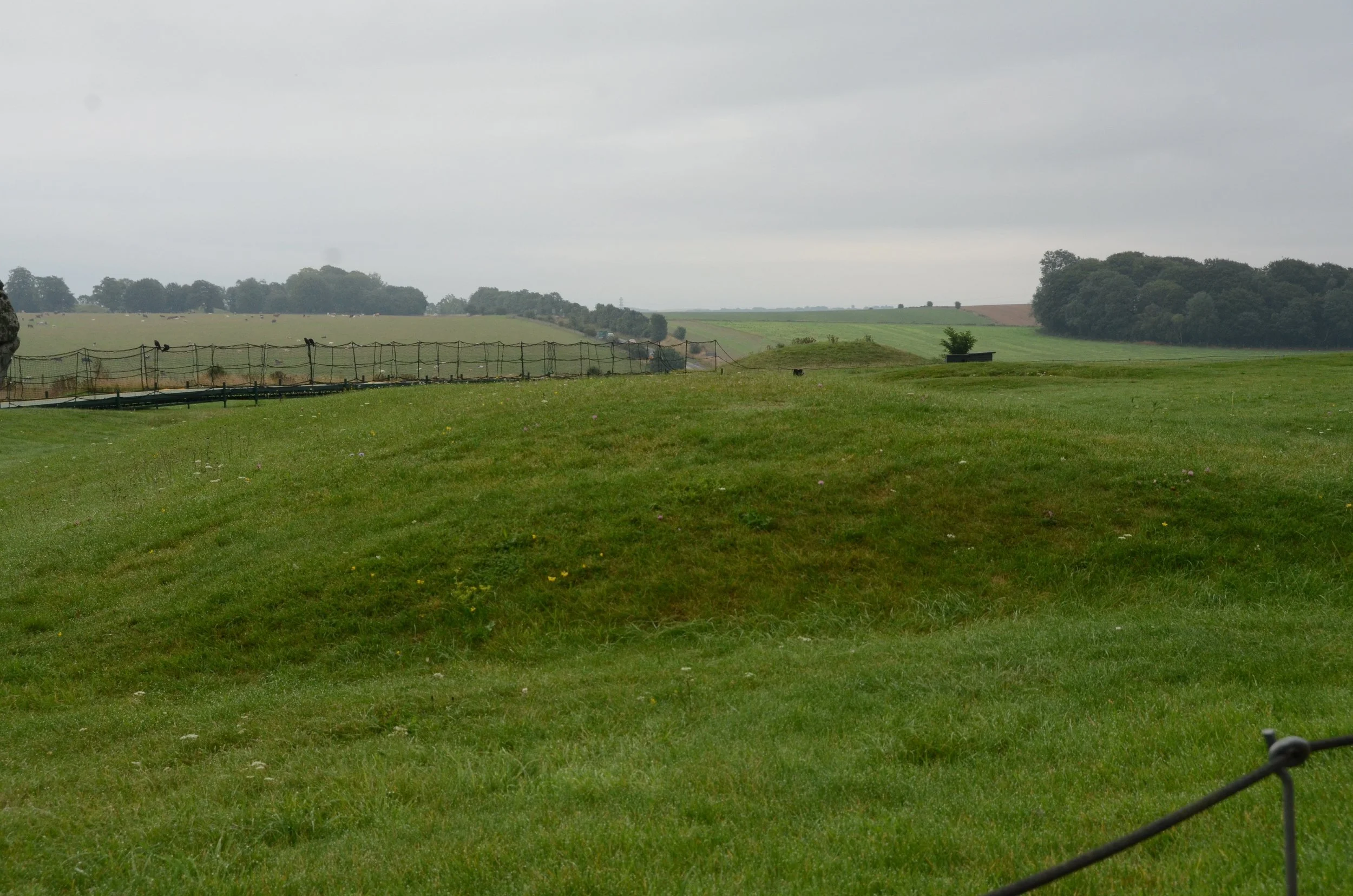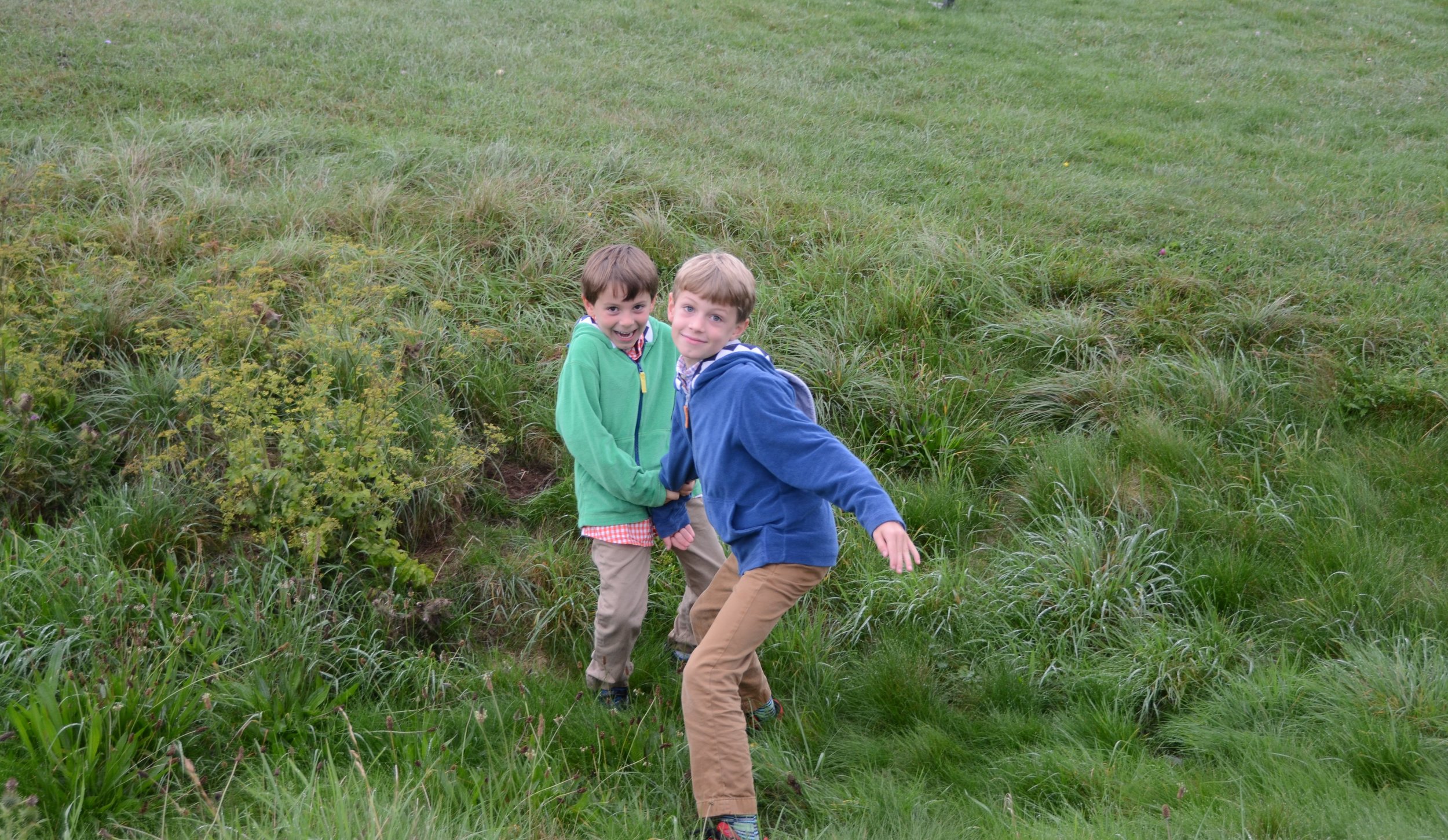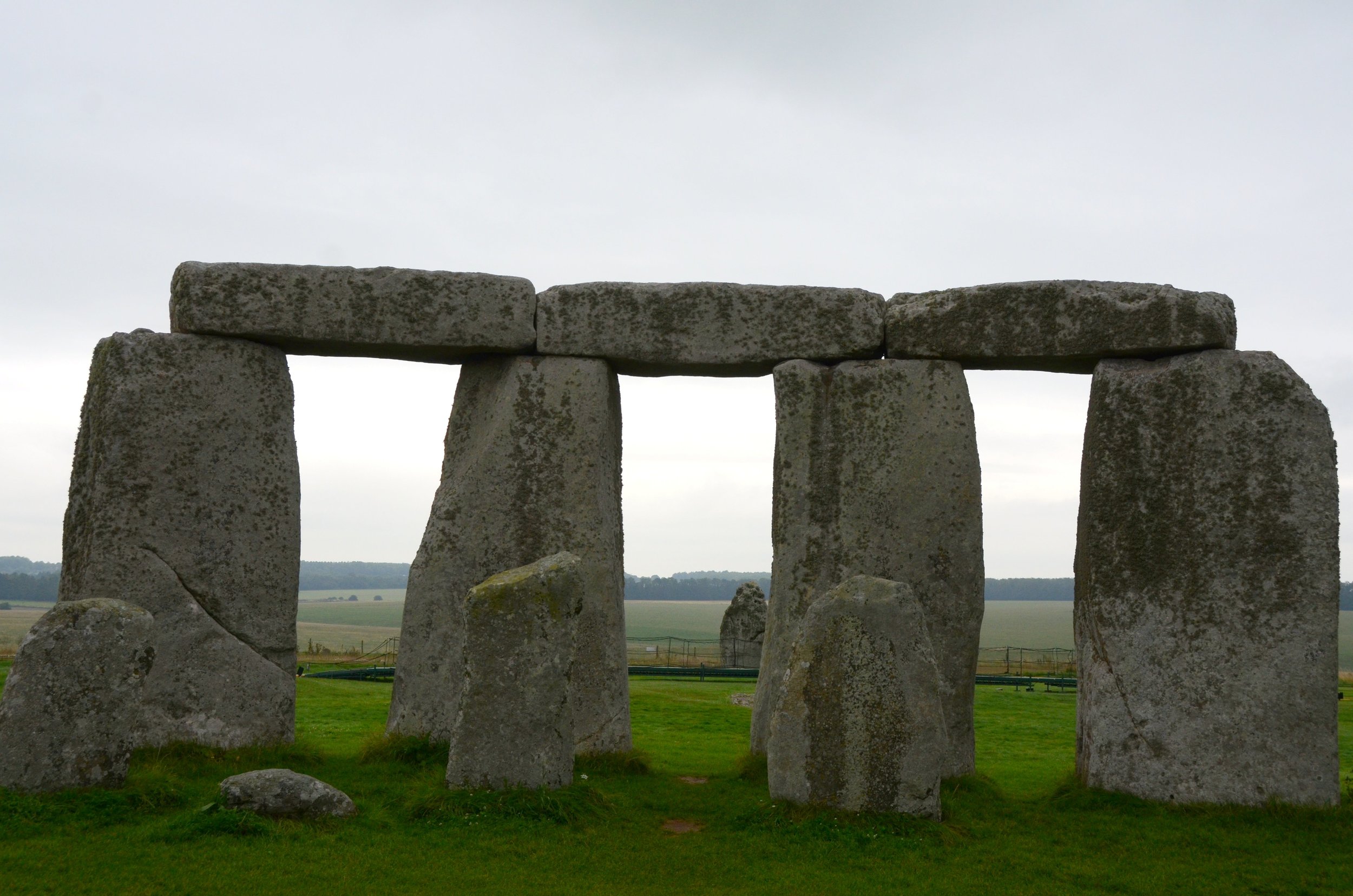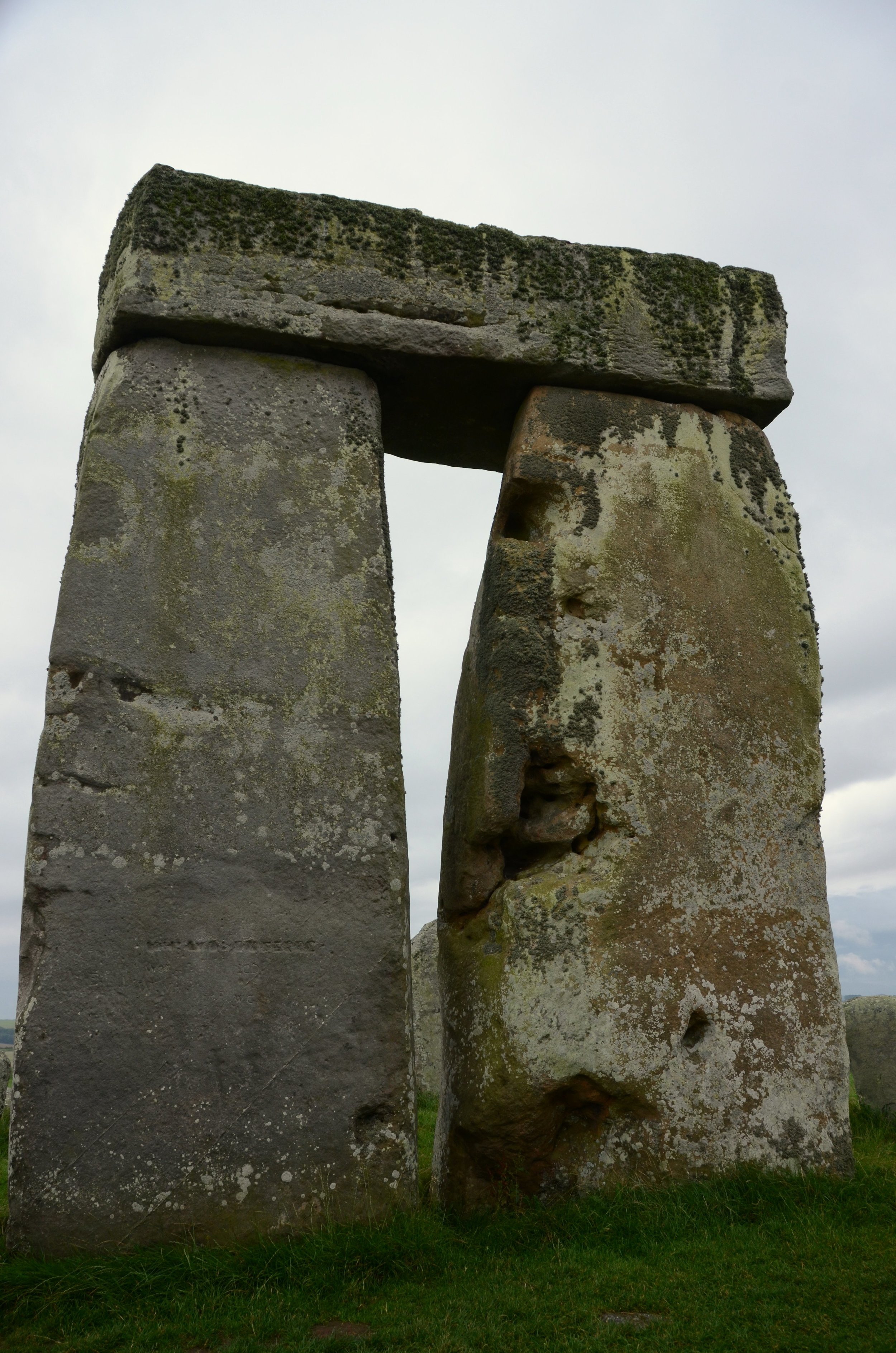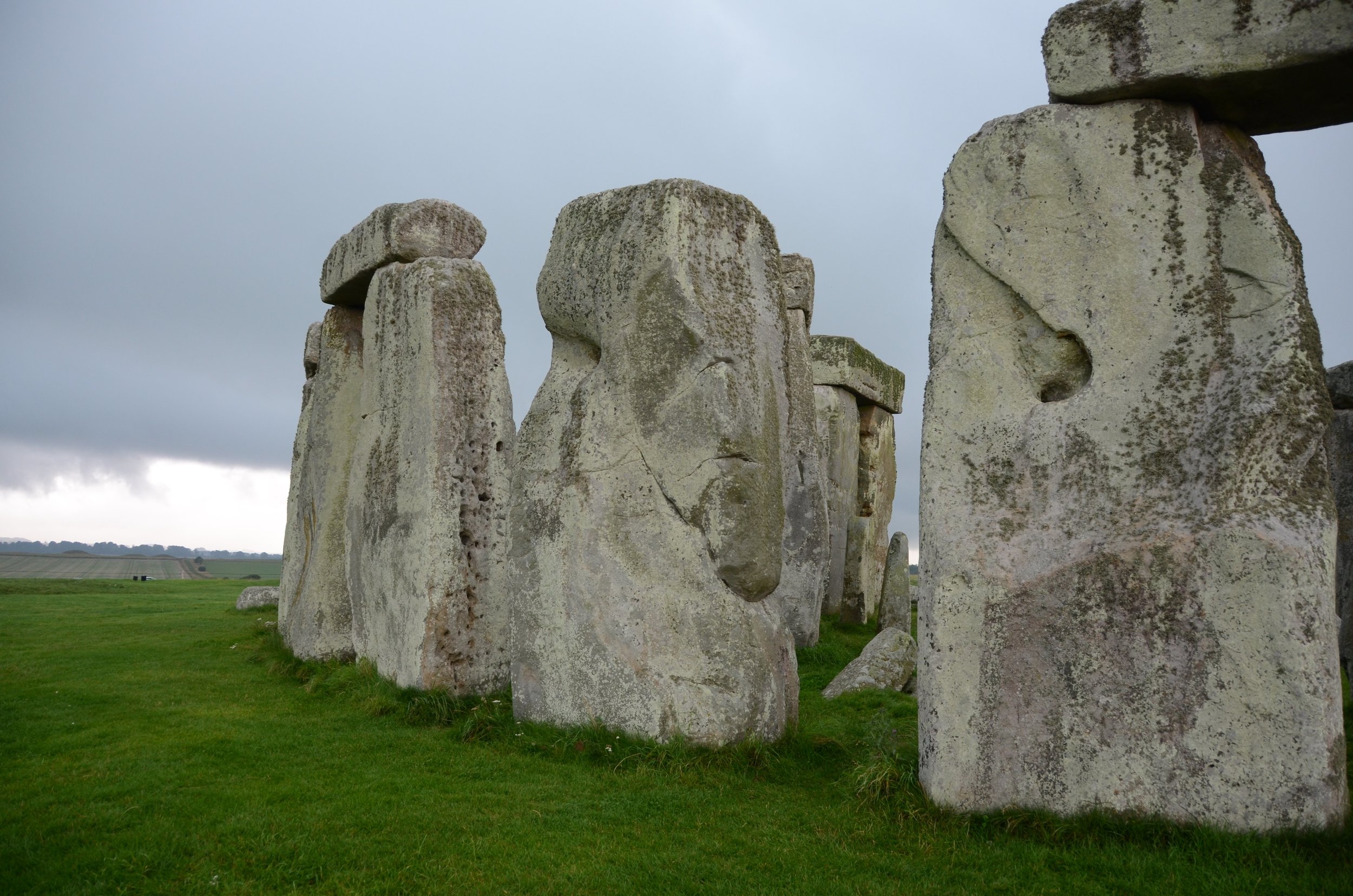Stonehenge
/Visiting Stonehenge has been on my bucket list for as long as I can remember. It's hard for me to articulate the why behind that desire, really, but a few days ago, on a chilly, rainy Sunday, I crossed this one off my list.
As you may know, Stonehenge is a grouping of enormous stones quarried and erected more than 2,500 years ago (around the time the Egyptian pyramids were constructed). In the spot on which it stands, first came what's known as "earth henge," a circular ditch and bank structure (see below pictures) constructed roughly 5,000 years ago that is still quite visible and serves as the outer perimeter of the Stonehenge landmark.
Inside the inner bank then came the Aubrey Holes, a ring of 56 pits. It is believed that in each once stood a tall stone, and in some have been found cremated remains of humans. No human remains have been discovered further into the sacred space. Some think timber once stood in the Aubrey Holes -wood henge- while others wonder if the now-interior bluestones were first in the Aubrey spots and then moved.
Quarried and rafted upriver 150 miles from Wales, the bluestones were treated so specially because they are considered to have healing powers. Can you even imagine doing all this prior to the iron age, wheels and industrialization of any form?
see the shorter, thinner bluestones between the two sarsen rings?
The larger, outer ring of trilithons -two vertical stones capped by a horizontal lintel; the three are fixed together rather like a Lego- was once contiguous. But as many of the sarsens and lintels have toppled, we now experience what remains.
There are also a number of directional stones: the slaughter, heel and station stones and their related markers. It's believed these helped orient the builders such that Stonehenge is not only a very accurate circle design but also perfectly frames the winter and summer solstice suns as they rise. The slaughter stone was not the site of any sacrifices of which we know; rather it contains iron deposits that tinge red any water that sits in the stone's divots for long. Red water -> bloody -> the "slaughter stone" moniker.
look closely and you can definitely see the reddish hue of the pooled water
I decided that were we going to drive nearly two hours from London to see this magical stone sculpture, we might as well do it really right. If you can, I highly suggest purchasing the Stone Circle Access Tickets which are very limited in number but totally worth the effort and extra cost (roughly double a normal ticket).
With these tickets, you not only enter the site before the official opening time (we had 7:30am tickets; regular opening is 9am) but also get to ignore the guard rails and go mingle with the stones. No touching but you can otherwise get as close as you like.
You can see the lichen varieties growing across the stones. You can see up close the holes carved into the lintels and the mounds left behind in the sarsens so that they fit together securely. You can see where the blackbirds like to land and where they have built nests. You can look into the "bloody" pools of water atop the slaughter stone. You can stand underneath thousands-years' old stones and feel small and humbled. You can wander and never want to leave and also think, god, this is such a remote, odd spot.
sarsen fitting into a lintel; note the lichen
the birds love their perch
I loved it and feel so lucky to have gone. As we left, the storm that had been rolling in opened and let loose. The wind whipped our hair and bodies, dirt crumbs caked our legs. And it felt just right.


